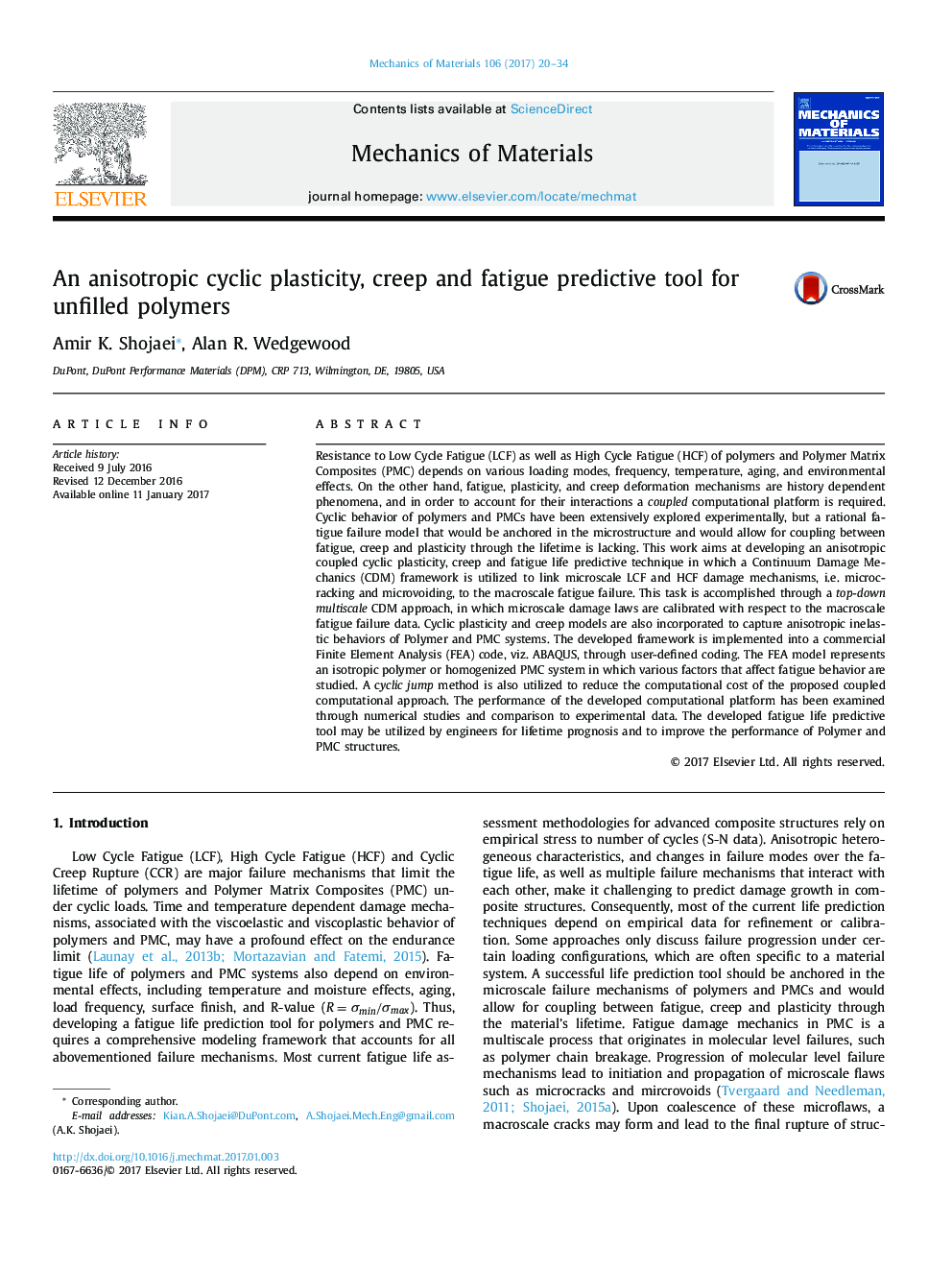| کد مقاله | کد نشریه | سال انتشار | مقاله انگلیسی | نسخه تمام متن |
|---|---|---|---|---|
| 5018524 | 1467433 | 2017 | 15 صفحه PDF | دانلود رایگان |
عنوان انگلیسی مقاله ISI
An anisotropic cyclic plasticity, creep and fatigue predictive tool for unfilled polymers
ترجمه فارسی عنوان
یک ابزار پیش بینی کننده سیلکی نازکی، خزش و خستگی برای پلیمرهای پر نشده
دانلود مقاله + سفارش ترجمه
دانلود مقاله ISI انگلیسی
رایگان برای ایرانیان
موضوعات مرتبط
مهندسی و علوم پایه
سایر رشته های مهندسی
مهندسی مکانیک
چکیده انگلیسی
Resistance to Low Cycle Fatigue (LCF) as well as High Cycle Fatigue (HCF) of polymers and Polymer Matrix Composites (PMC) depends on various loading modes, frequency, temperature, aging, and environmental effects. On the other hand, fatigue, plasticity, and creep deformation mechanisms are history dependent phenomena, and in order to account for their interactions a coupled computational platform is required. Cyclic behavior of polymers and PMCs have been extensively explored experimentally, but a rational fatigue failure model that would be anchored in the microstructure and would allow for coupling between fatigue, creep and plasticity through the lifetime is lacking. This work aims at developing an anisotropic coupled cyclic plasticity, creep and fatigue life predictive technique in which a Continuum Damage Mechanics (CDM) framework is utilized to link microscale LCF and HCF damage mechanisms, i.e. microcracking and microvoiding, to the macroscale fatigue failure. This task is accomplished through a top-down multiscale CDM approach, in which microscale damage laws are calibrated with respect to the macroscale fatigue failure data. Cyclic plasticity and creep models are also incorporated to capture anisotropic inelastic behaviors of Polymer and PMC systems. The developed framework is implemented into a commercial Finite Element Analysis (FEA) code, viz. ABAQUS, through user-defined coding. The FEA model represents an isotropic polymer or homogenized PMC system in which various factors that affect fatigue behavior are studied. A cyclic jump method is also utilized to reduce the computational cost of the proposed coupled computational approach. The performance of the developed computational platform has been examined through numerical studies and comparison to experimental data. The developed fatigue life predictive tool may be utilized by engineers for lifetime prognosis and to improve the performance of Polymer and PMC structures.
ناشر
Database: Elsevier - ScienceDirect (ساینس دایرکت)
Journal: Mechanics of Materials - Volume 106, March 2017, Pages 20-34
Journal: Mechanics of Materials - Volume 106, March 2017, Pages 20-34
نویسندگان
Amir K. Shojaei, Alan R. Wedgewood,
